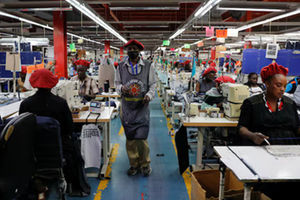Why electricity from geothermal sources has been delayed

What you need to know:
- So far, the country has 50 geothermal energy clusters in several regions which are in various stages of preparation for generating electricity
Dar es Salaam. Tanzania will get its first geothermal-powered electricity by 2024, an expert said in Dar es Salaam yesterday, revealing the reasons why it has taken so long for the country to achieve that.
The general manager of the Tanzania Geothermal Development Company Limited (TGDC), Mr Kato Kabaka, told journalists yesterday that in its energy mix, Tanzania seeks to produce 200 Megawatts from geothermal by the year 2025.
So far, the country has 50 geothermal energy clusters in several regions which are in various stages of preparation for generating electricity.
Briefing journalists as part of events to mark the 60th independence anniversary for Tanzania, Mr Kabaka said though the company was established in 2013, it has mostly been conducting exploration and some piloting since then.
“We have already finished preliminary and detailed surface exploration stages which are the most expensive and time consuming stages in several areas in the country,” he said.
He said during the period, they identified several areas that are ready for power production. The areas and their anticipated electricity generation capacity in brackets include: Ngozi – Mbeya (70 megawatt), Songwe (5), Kiejo Mbaka – Mbeya (60) and Luhoi – Coast (5) among others.
According to him Tanzania has a potential of generating 5,000 megawatt of electricity from its geothermal sources but the cost of running these projects were slowing down the feat. “The minimum cost of generating one megawatt in between $2 million (about Sh4.6 billion) to $5 million (Sh11.5 billion) and most of the costs are in surveying stages,” he said. Giving example of costs of various projects such as Songwe is $32 million (Sh73.6 billion) and will be ready to generate such power in 2023 and Kiejo-Mbaka costs $75 million for 10 megawatt to start with in 2024.
Due to the challenge of electricity shortage in the country currently mainly due to unreliability of sources (waters) the ministry is preparing to increase on relying on renewable sources apart from water.
The assistant commissioner for electricity development in the Ministry of Energy, Mr Styden Rwebangila, said apart from geothermal sources the government has allowed investors who are ready to generate electricity from renewable sources such as wind and solar.
“The government has signed contracts with companies which have introduced competitive prices and they will soon start generating power,” he said.





